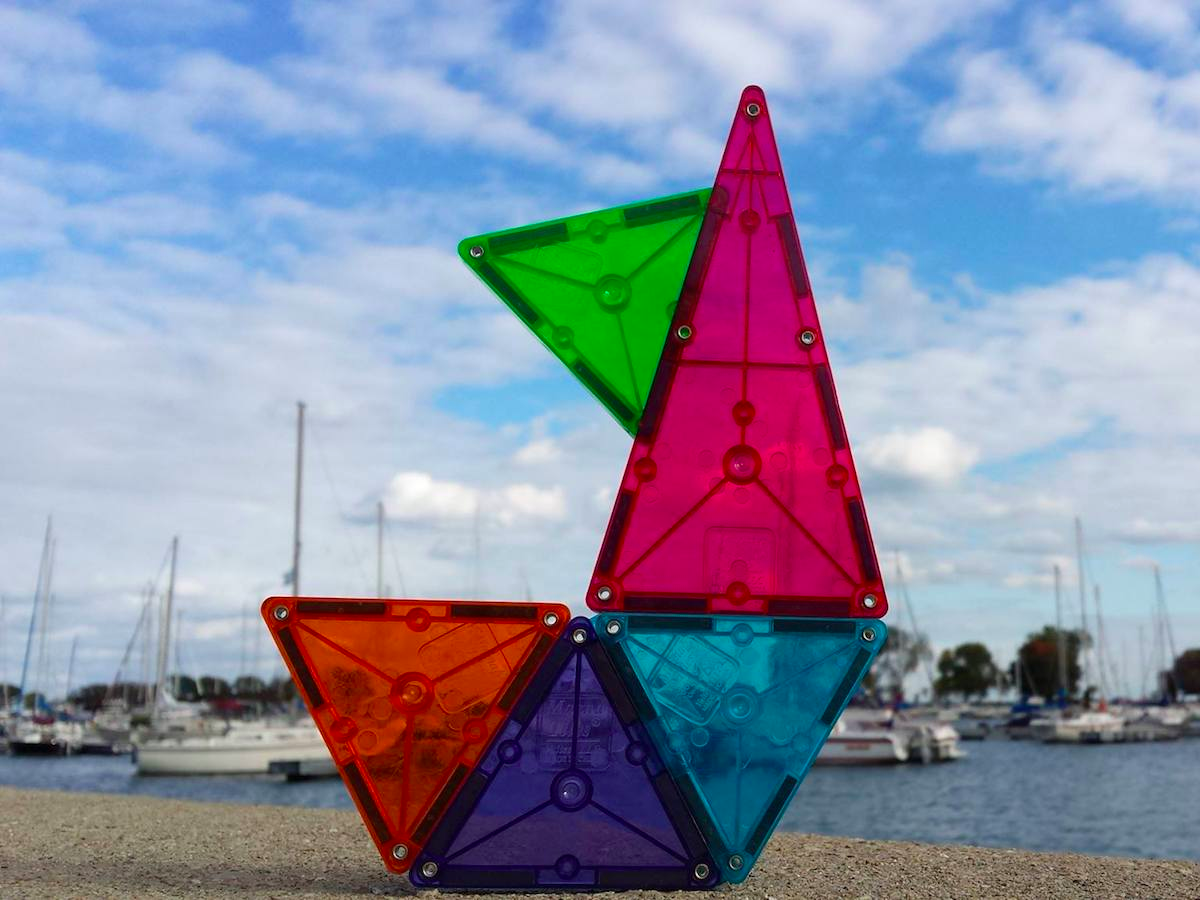- Children learn by playing, and educational toys encourage the development of essential skills like creativity, thinking outside the box, and problem-solving.
- STEM toys, in particular, enhance divergent and innovative thinking, help children develop hand-eye coordination, and better promote spatial skills. Not surprisingly, the educational toys in this guide are all STEM.
- Of all the expert-approved educational toys, the Magna-Tiles Clear Colors 100-Piece Set is our top pick. This must-have toy is deceptively simple, but it’s packed with fun.
Like it or not, the toys we choose to buy for our kids can make a difference in their development. During your child’s growing years, it is important to provide them with educational toys that allow them to learn while they play. Different types of toys require children to use different skill sets and tap into different learning areas of the brain.
While any toy can offer value to a developing brain, there are certain toys, usually referred to as educational, learning, or instructional toys that provide specific value to children. The beauty of educational toys is double fold, as they appeal to both children and parents. At their core, they are still toys, so they don’t seem like homework or a burden to children, yet they conveniently, almost secretly, provide learning benefits.
That’s why we’ve done the research to find the best educational toys for kids of all ages. Before we get into our picks, here are some scientific benefits to educational toys.
Benefits of Educational Toys
- Innovative and creative thinking: When playing with educational toys and games, children can develop perception, intuition, and reasoning as they partake in a creative activity.
- Cognitive skills: Educational toys can help children connect to their thought processes and further develop their capabilities to think freely. Common toys that help boost cognitive skills include puzzles and number games.
- Motor skills: With the right educational toys and games, children develop their motor skills in conjunction with their cognitive skills.
- Soft skills: By giving children a well-guided play experience, children develop what are considered softer skills such as appropriate social interaction (dictated by social values, principles, and sentiments), language skills, and emotional development (i.e. handling certain situations, such as losing a game, helps them learn to accept challenges, to overcome them, and to gain mental strength).
We’ve handpicked five of the best educational toys that provide a firm foundation for learning and education, thereby giving your child a good start early in life. Certainly, different learning toys are best for certain age groups, but rather than focus on individual age groups, we sought to present the best toys on the market hands down, regardless of age. Most toys on our list are suitable for children six years and older, although some may be used by children as young as 3 years old.
All picks ended up being STEM toys, not by intention, simply by nature of finding the best products out there for educational purposes, from science experiments and engineering toys to robots and apps. Our selections are based on online research and hands-on reviews ranging from parenting bloggers to tech analysts as well as independent expert rankings. In this category, we also took into consideration the type and number of awards and recognition the toys received from educational institutions and researchers. Read more about our top educational toys in the following slides.
Here are the best educational toys for kids:
- Best educational toy overall: Magna-Tiles Clear Colors 100 Piece Set
- Best educational toy for learning about electricity: Snap Circuits Jr. SC-100 Electronics Discovery Kit
- Best educational toy for learning about science: Scientific Explorer Mind Blowing Science Kit
- Best educational toy robot: Wonder Workshop Dash Robot
- Best app-based educational toy: Osmo Genius Kit
Prices and links are current as of 4/03/2020.
The best educational toy overall
The Magna-Tiles Clear Colors 100 Piece Set is loved by children, educators, and parents for its ability to develop spatial, fine motor, and creative skills.
Magna-Tiles come in various sizes, shapes, such as right, equilateral, and isosceles triangles, and colors. Each tile has magnets along the edges and the unique ability to attract to other tiles even when they are flipped, which provides seemingly endless possibilities for use.
The tiles allow children to create anything they can dream up on either a flat surface in three dimensions. The tiles are great for all kids above the age of three. Younger children learn basic shapes by stacking and creating objects such as hexagons, while older children develop math and science skills by perfecting patterning, shape recognition, building, spatial, and fine motor skills.
As children grow, they can proudly transition to become Magna-Tile architects building more complex projects. The set comes with 100 pieces of translucent tiles to create cubes, pyramids, and other geometric shapes, but they are also compatible with other Magna-Tile sets. The more pieces or sets you combine, the more complex objects children can make. The company shows off kids' creations on its site, including skyscrapers, rocket ships, tea party tables, and more.
The tiles are translucent, so your child can build a structure and put it in direct sunlight to get a colorful reflection, use them on windows to create illuminated window decals, "look" inside 3D shapes with a flashlight, see through them with a light table, or use them with a projector to seemingly enlarge the sizes of pieces and projects.
Magna-Tiles have received numerous awards and accreditations, including the Global Educator Institute Seal of Endorsement, which recognizes the very best in classroom-tested, teacher-approved learning products using a rigorous assessment process. The tiles have also won the Purdue University Engineering Thinking & Design Toy Award, the Brain Child Award by the Tillywig Toy & Media Awards, the commended medal in the construction category in the 2014 Independent Toy Awards, and an "Excellent" play's accreditation by the research of Jørn Martin Steenhold, C.Phil. Wirecutter also recommends Magna-Tiles in the Building Toys category of its top educational toys.
If the 100-piece set doesn't fit your budget, check out the more affordable 32-piece set with fewer pieces. That way, you can add to your collection over time instead of paying so much upfront.
Pros: Spans various age groups, can be used in countless activities, hands-on, nearly no learning curve to start using them, enhances various skill sets
Cons: Pricey
The best educational toy for learning about electricity

The Snap Circuits Jr. SC-100 Electronics Discovery Kit will fill your child with knowledge about how basic electronics function.
The Snap Circuits Jr. SC-100 Electronics Discovery Kit gives kids a hands-on education in electrical circuits so they can better understand the devices they use every day. The kit comes with 30 parts, including snap wires, slide switches, an alarm circuit, a music integrated circuit, and a speaker. It includes kid-friendly instructions to build more than 100 projects, such as a sound-activated switch, a musical doorbell, a voice-controlled lamp, a flying saucer, a lighted police siren, and more.
The projects build on each other and allow children to advance at their own pace, starting off with a simple electric light and switch, and advancing to more complex projects. Along the way, kids get to build replicas of real circuit boards found inside televisions, radios, and other electronic devices.
Beyond teaching valuable lessons about wiring that some adults may not even know, the STEM learning toy promotes building skills and teaches kids how to follow instructions. So as to not be overwhelming or discouraging to any child, the kit conveniently comes with a project manual that features large, colorful illustrations and simple directions for each project. Additionally, each of the 30 pieces is numbered and color-coded for easy identification. Intended to be a DIY toy that does not require parental supervision, there's no soldering or additional tools required. Rather, as the product name suggests, the pieces just snap into place.
The beauty of buying this starter kit is that it's a toy that progresses as your child grows. While more than 100 projects will certainly take a good amount of time to complete, the learning doesn't stop there. Once children have mastered several of the techniques introduced in this kit, they can use the components along with a little creativity to experiment and create their own customized circuits and electronic devices.
Additionally, all Snap Circuit kits are fully compatible, meaning once this junior set has served its purpose, you can upgrade your kit to the Snap Circuits SC-300 Original Discovery Kit, Snap Circuits Sc-500 Pro, or Snap Circuits SC-7500 Extreme. You don't even have to buy an entirely new toy with each upgrade, as Snap Circuit conveniently offers more affordable 'upgrade' kits.
Keeping your budget in mind, since all modules are fully compatible, purchases of additional kits only grow, rather than replace, your child's Stem Circuits collection.
Snap Circuit products have been recognized by The National Parenting Center with a Seal of Approval, and it has racked up more than 30 awards from the likes of the American Specialty Toy Retailing Association (ASTRA), Tillywig, and others. In addition to the plethora of awards Snap Circuit kits have received, they are also featured in Wirecutter.
Pros: Cost-friendly, easy to expand your set rather than replace it, gives kids a hands-on learning experience with electricity, various add-on options to complement each child's unique interests
Cons: Pieces may not be super sturdy, batteries required
The best educational toy for learning about science

The Scientific Explorer Mind Blowing Science Kit teaches kids all about chemical reactions, which is less scary than it sounds.
The Scientific Explorer Mind Blowing Science Kit allows kids aged six and up to make "magic" (aka science) appear in front of their eyes, by teaching them about how chemicals can be added together to create reactions.
The kit consists of open-ended tools to construct, engineer, explore, and experiment with. It comes with "chemicals" that are all kid-friendly and safe, such as red cabbage powder, citric acid, baking soda, three color tablets, a cross-linked polyacrylate copolymer, vegetable oil, and cornstarch. You'll also get tools, including two cotton swabs, three test tubes, three plastic cups, pipette, two measuring scoops, and an activity guide.
To learn the basics of chemical reactions, with this starter kit, kids can create 11 different hands-on, fun, and educational experiments such as a sunset in a test tube and a color-changing volcano. To complete experiments, you will need some in-home products such as water and baking powder.
Once kids have had their fair share of fun with this popular starter kit, there are a long list of other Scientific Explorer kits from the same company that your child can upgrade to for more science-learning fun, such as the Scientific Explorer Disgusting Science Kit, the Scientific Explorer My Own Perfumery, or the Scientific Explorer Ice Cream Science Kit.
Pros: Price, multiple supplementary kits and add-ons to accommodate each child's unique interest, hands-on, safe
Cons: May not entertain or excite children not interested in science, many projects/lessons could be done or taught without the purchase of the kit
The best educational toy robot
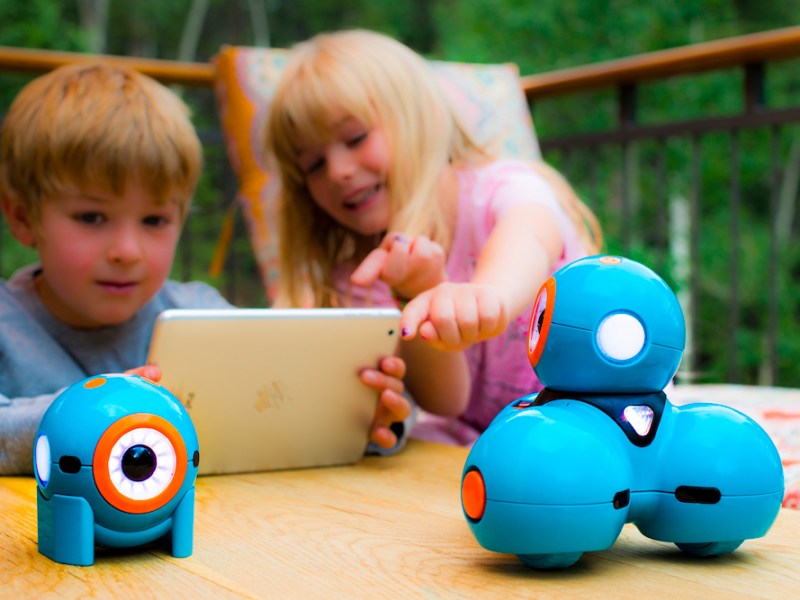
Make learning to code, solving problems, and developing patience fun for kids with the Wonder Workshop Dash Robot.
When this Robot was first launched, our own Matt Rosoff got a chance to test out the robot collection with his kids and they enjoyed it. Intended for kids aged six years and up, the Wonder Workshop Dash Robot works with free mobile apps. Your child uses the apps to make the tiny robot dance, light up, make sounds, avoid obstacles, and react to their voice.
The robot is responsive to its world, so your child can really bring it to life through the hundreds of diverse coding adventures and projects available. As a plus and major time saver, it comes fully assembled and features built-in learning tools like the Go App, so your child can begin to learn and play with Dash right out of the box.
In addition to teaching children to code, the Wonder Workshop Dash Robot helps them develop patience and build problem-solving skills, as there are endless possibilities for freeform play. Dash also won't tire out as quickly as other toys, as apps accommodate different age groups, learning levels, and playing styles.
For example, the Blockly app introduces kids to fundamental programming concepts including algorithm design, command sequences, flow controls, and creative problem-solving. The Xylo app introduces children to programming through music and helps foster skills such as algorithm design, command sequences, and control flow, and loops.
To ensure children never get bored, the robot comes with various optional add-ons for further learning, including a Wonder Workshop Launcher for Dash Robot, which turns the robot into a programmable launching machine, and the Wonder Workshop Build Brick Extensions, which lets kids use Legos to build the robot into anything they can dream up.
The Dash Robot has received numerous awards from the likes of Dr. Toy, the National Parenting Publication, Good Housekeeping, and more and holds high reviews on established tech sites, such as an 8-out-of-10-star review on Digital Trends and a 4-out-of-5-star review on PCMag. The robot is also featured in Wirecutter and The New York Times.
Pros: Makes coding fun, guided setup and learning process, hundreds of use cases, multiple apps accommodate different learning styles
Cons: Best for a certain age range, reports of trouble pairing the product with certain mobile devices
The best app-based educational toy
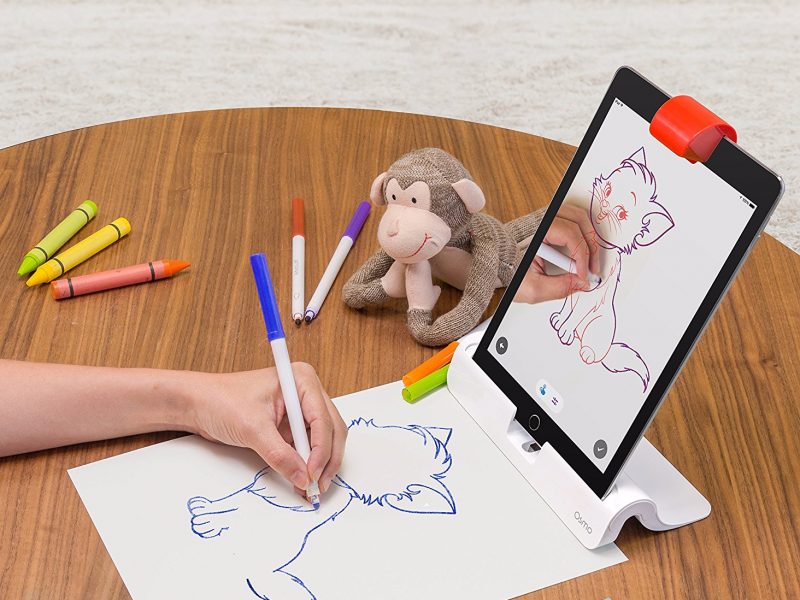
The Osmo Genius Kit enhances skills from math to drawing and incorporates hands-on digital learning.
The Osmo Genius Kit allows you to transform your iPad into a hands-on learning tool for your child. This starter set includes five games that foster creativity and problem-solving skills through hands-on and screen-based play, although additional games are available as add-ons for continual learning.
Designed for kids ages 5 through 12 years old, you can pick the type of learning that is best for your child based on the apps you give them. For example, Tangram lets kids arrange wooden puzzle pieces to match on-screen shapes to encourage visual thinking, while Newton, a drawing game that allows you to place any object in front of the screen and manipulate falling balls on the screen into the target zones to recreate the object, encourages problem-solving with 60 different levels of difficulty.
We really like that you can completely customize the learning kit to your child's particular learning structure and although there are only nine core games, the games have so many levels they can adapt to your child at any stage of learning within the intended age levels.
The kit turns core subjects into fun games. Kids can tackle math with the app Numbers, which has kids arrange physical tiles, including dots and digits, to make numbers and complete levels. Meanwhile, the spelling-focused Words app has 150 puzzle images that ask kids to guess and spell out the hidden word on screen by tossing down real-life letters.
The Osmo Genius Kit comes with the basic Osmo stand and reflector, as well as five core apps and games: Masterpiece (drawing skills), Numbers (math), Tangram (spatial thinking), Words (spelling), and Newton (creative problem-solving).
The learning toy has received rave reviews from dozens of online experts ranging from Consumer Reports and Wirecutter to Wall Street Journal. Osmo was listed as one of Time's 25 Best Inventions of 2014, was a Toy of The Year Finalist is 2015, and the company was listed as one of Fast Company's 10 Most Innovative Companies In Education 2017. Tech publications like PCWorld and Digital Trends recommend the Osmo Genius Kit, too.
Pros: Lessons (games) build on each other for continual learning as your child grows, various apps with hundreds of levels to advance to, teaches various skill sets and schools of study, uniquely incorporates hands-on learning in a digital environment
Cons: No detailed instructions for use, price, requires a tablet.
The importance of play, educational toys, and STEM
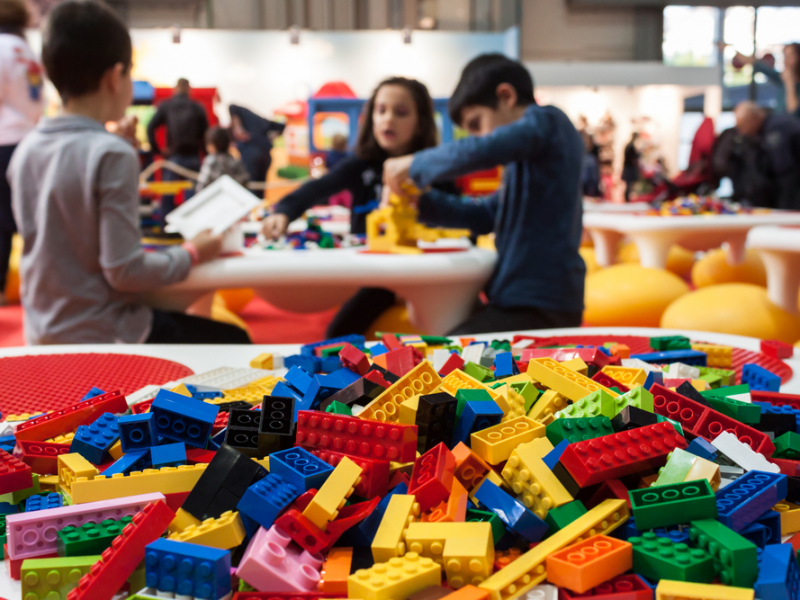
What makes a toy educational?
To be considered an educational toy, the toy must meet certain criteria. It must also be designed to stimulate learning or provide educational value, such as helping a child develop a certain skill or learn about a specific subject. Generally, educational toys claim to enhance intellectual, social, emotional, and/or physical development. Many are designed to target developmental milestones within appropriate age groups. Most importantly, educational toys encourage kids to play.
Play increases the size of the prefrontal cortex, meaning that the brain is more efficient at making plans, solving problems, and regulating and identifying emotions - basically all things required for a successful life.
Play is so important, in fact, that it's recognized by the United Nations as a human right for children. The importance of play for children wasn't thoroughly researched or even really considered until the second half of the 20th century but we can sum the research that has resulted thus far with the famous proverb, "All work and no play makes Jack a dull boy."
How to pick an educational toy
Here are some basic questions to ask yourself when picking an educational toy for your child:
- What areas of learning will this toy allow my child to tap into?
- What new skills will my child develop by playing with this toy?
- Are there different ways for my child to play and engage with the toy?
- Will the toy grow with them and last for years to come?
- Can the toy be played with independently and cooperatively?
Why are STEM toys so popular?
Recently, the big buzzword surrounding educational toys is STEM learning. STEM is an acronym for Science, Technology, Engineering, and Math, and STEM Toys are learning toys developed with an educational focus in one (if not more) of those four principal areas of study.
The idea here is that more jobs will be coming out in future years that require science, technology, engineering, and/or math skills and thus introducing children to these concepts at an early age can give them a leg up on their fellow students - aka future job candidate competitors. STEM learning is becoming so popular that earlier this year, that brands like KiwiCo deliver monthly educational toys to children.
The benefits any STEM toy provides depends on the subject matter it is intended to teach, but in general, STEM toys go a bit further than regular educational toys to enhance divergent thinking, enhance innovative thinking, help children develop hand-eye coordination, and better promote spatial skills.
However, just because these toys are STEM-focused, that doesn't mean they're not creative, artistic, or educational in other ways, so don't get hung up on the labels. As long as your kids have fun and are learning while they play, that's all that matters.
Check out our other great toy guides
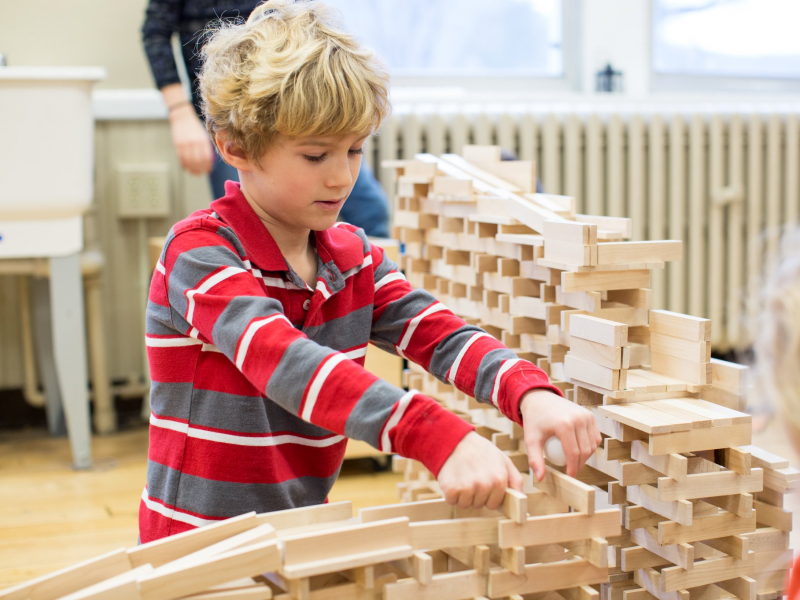
The best STEM toys
STEM toys are not only enjoyable to play with, but can also teach skills that will help kids excel in careers later in life. Many STEM toys lead to development of more than one ability, honing skills in mathematics, logic, problem-solving, and more.
The best wooden toys
While it's admittedly not as easy to find wooden toys in today's sea of plastic as it once was, they're still out there and they're still going strong. We've gathered up our favorite wooden toys and games for all ages.
The best beach toys
Whether it's you and the kids or you and the crew headed to the beach, we've assembled a list of some of the best beach toys for ensuring you have a great time. We found toys for playing in the sand, water fights, kite-flying, and more.
